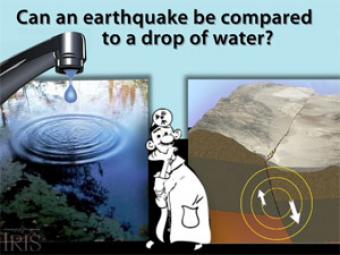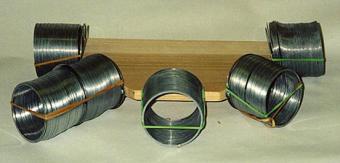
How are earthquake waves UNLIKE a drop of water on a pond?
Part 2/2 Comparing seismic waves to ripples in water. This animation explores how seismic waves are UNLIKE ripples on water. Dr. Geophysics helps explain 4 significant differences.
CLOSED CAPTIONING: A .srt file is included with the downloiad. Use appropriate media player to utilize captioning.

Exploration of how an earthquake is LIKE ripples on/in water. Dr. Geophysics guides you through the simple physics of potential energy and energy release. Analogies are a useful instructional strategy, especially in the science classroom. In this case, the analog is a drop of water hovering above and then falling into a pool of water, while the target is an earthquake.

This poster combines a visualization of ground motion resulting from the February 21, 2008 M 6.0 earthquake that occurred near Wells, NV, with the image of a faucet to illustrate a classic Earth science functional analogy: "Seismic waves radiate outward from an earthquake's epicenter like ripples on water".

Working in both small groups and as a whole class, students investigate the classic Earth science analogy: "Seismic waves radiate outward from an earthquake's epicenter like ripples on water". A discrepant image connects the unfamiliar concept of the spreading out of seismic waves to the more familiar scenario of ripples on water radiating outwards in all directions after a droplet falls onto a pool.

The slinky is an effective tool for the demonstration seismic wave characteristics and wave propagation. Slinkys can be used both individually and in various combinations to demonstration different concepts.